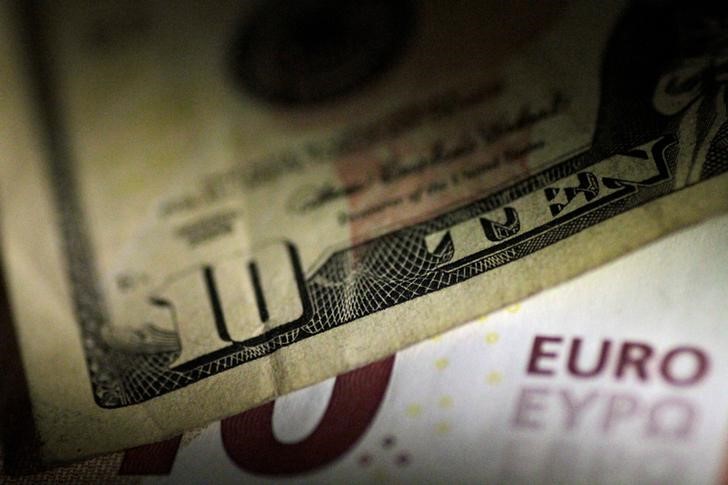Investing.com – The US dollar fell marginally on Friday, while the euro also fell, heading for a sharp weekly loss amid political unrest in the region.
At 04:20 ET (08:20 GMT), the Dollar Index, which tracks the greenback against a basket of six other currencies, was trading 0.1% lower at 105.125.
Dollar edges lower
Despite these small losses, the dollar is on track for small gains this week after the fund rate remained unchanged at 5.25%-5.5%, but the number of expected cuts this year was reduced to just one from three in March.
That said, these gains have been limited after both the US and prices were weaker than expected, suggesting inflation pressures were easing, while jobless claims rose to a 10-month high last week.
Despite the Fed’s June dot chart showing an average projection of just one rate cut in 2024, Goldman Sachs continues to expect a first rate cut in September and a second cut in December.
“Our 2024 inflation forecast is now slightly lower than the FOMC’s, which Chairman Powell characterized as ‘fairly conservative.’ With two better rounds of inflation data now available, we believe that if the next three rounds are in a similar range, leadership is likely to make a cut in September,” the US bank added.
The euro weakens due to political unrest
fell 0.3% to 1.0708, on course to register weekly losses of around 0.8%, while the European region was mired in political unrest after far-right parties made gains in the European Parliament elections, which were held on Sunday closed.
French President Emmanuel Macron responded to losses for the right-wing National Front party, led by Marie Le Pen, by calling for early elections in France.
“It looks like the euro is set to take another step lower today in early Europe, following the news that France’s left-wing parties are joining forces to form a coalition and field only one candidate per district between them,” said ING analysts. a note. “This rare collaboration from the left will further drain support from President Macron’s party.”
in France rose by 2.6% year-on-year in May, slightly lowering preliminary figures of a 2.7% increase published at the end of May.
EU harmonized year-on-year figures in the bloc’s second-largest economy accelerated in May from 2.4% recorded in April.
fell 0.2% to 1.2729, heading for small gains this week, after stronger-than-expected inflation data in Britain last month prompted investors to reverse their bets on the start date of the BoE’s interest rate cuts at the end of 2024.
The May publication in the UK is expected next week, as is the next one from the Bank of England.
The yen weakens after the BOJ meeting
In Asia, trading was 0.3% higher at 157.56 after markets disappointed with their plans to tighten policy.
The BOJ kept rates steady and said it would only give clear signals about its plans to scale back its bond purchases at its July meeting, and was meeting with market participants in the meantime to gain more insight.
rose 0.1% to 7.2557, rising to the highest level in almost seven months, with sentiment towards China battered as the EU imposed high tariffs on electric vehicle imports from China.


